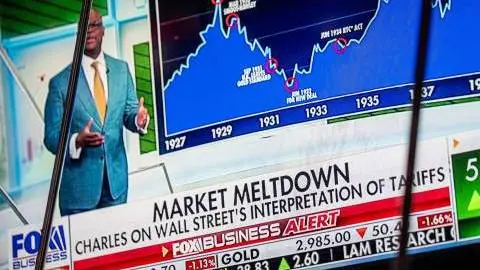Navigating the new tariff landscape
The 2 April 'liberation day' aftermath has been nothing short of chaotic. We've seen new tariffs and a 90-day pause, as well as reductions and exceptions. For now, we maintain our world trade growth profile of 2.5% year-on year given that the US only accounts for 13% of global exports – but ongoing uncertainty could still slump global trade
April trade chaos: 90-day pause and tariff adjustments
Since 2 April, the 90-day pause and reciprocal tariff reduction to 10% for all countries except China, as well as the immense tariff hike of an additional 125% rate for Chinese goods, has changed the tariff picture once again. The recent tariff elimination (0% for all countries except China, which faces a 20% rate) for several electronics such as smartphones, computers, hard drives, processors or semiconductors retroactively for 5 April has also complicated the tariff profile for goods entering the US.
Overall, the recent developments are welcome news, but it's important to remember that countries are still facing significant trade challenges:
- 10% increase across the board for nearly all countries compared to a couple of weeks ago
- 25% tariffs on cars and potentially on car parts by 3 May (at the latest)
- 25% tariffs on steel and aluminium
- Ongoing Section 232 investigations into copper and lumber, with pharmaceuticals, and potentially also semiconductors still under scrutiny
- Canada and Mexico still face a 25% tariff on goods that are not covered under the USMCA trade pact, while energy and potash imports from these countries continue to be subject to a 10% tariff
- 25% secondary tariffs on third countries importing Venezuelan oil and an ongoing Section 301 investigation into the Chinese shipbuilding sector
So, even if the worst-case scenario from 'liberation day’ has been avoided for now, we are nowhere near trade normality. Trade tensions could easily escalate again.
What does it mean for global trade?
US accounts for 13% of global exports, but consumer hesitation might slump global trade
Despite the current perception that global trade revolves solely around the US, it's important to remember that only about 13% of total global exports are directed there. This means that while the US plays a significant role, it is not the sole focus of global trade. With certain products being exempt from tariffs altogether, not all goods flows into the US are impacted by higher tariffs. The recent tariff exemptions for electronics exclude at least some 12% of all US imports from additional tariff hikes.
Except for China, many trade partners have refrained from engaging in tit-for-tat trade escalations. We anticipate ongoing front-loading into the US, extending from the first quarter and into the second, to maximise shipments before the 90-day pause ends. Mexico and Vietnam could still serve as “plus one” countries, acting as intermediaries for China’s trade with the US and vice versa, given the lower tariff rates.
Still, the prevailing uncertainty and market turmoil could cause consumers worldwide to hesitate in purchasing goods, potentially leading to a significant downturn in global trade. With the US having just entered a global trade war with all its trading partners, it is simply too early to get hold of the whole picture just yet.
How long are tariffs here to stay?
The immense stock and especially bond market reaction has led to a reduction of extremely high tariff rates and the exemption for some product and sector-specific tariffs. While this has prompted negotiations from all sides, we do not believe that tariffs will be slashed altogether. Despite the potential for a positive outcome from these negotiations, we also think that the 10% universal tariffs will stay in place during US President Donald Trump’s full term in office; these don't have too much of an impact on goods flows but still provide a reliable source of revenue for the US budget.
25% steel and aluminium tariffs, car and car parts tariffs will also remain, and we could see pharma, semiconductor, copper and lumber tariffs being imposed in the second or third quarter alongside higher fees for Chinese-operated ships in the second half of the year. The open question is whether reciprocal tariffs will return – or in China's case, be reduced. This will highly depend on the state of the US economy over the coming quarters. If our expected scenario of stagflation in the US materialises, it is hard to see the current trade tension continuing beyond year-end.
This publication has been prepared by ING solely for information purposes irrespective of a particular user's means, financial situation or investment objectives. The information does not constitute investment recommendation, and nor is it investment, legal or tax advice or an offer or solicitation to purchase or sell any financial instrument. Read more
Download
Download article
15 April 2025
ING Monthly: The tariff sledgehammer smashing the global world order This bundle contains 15 Articles